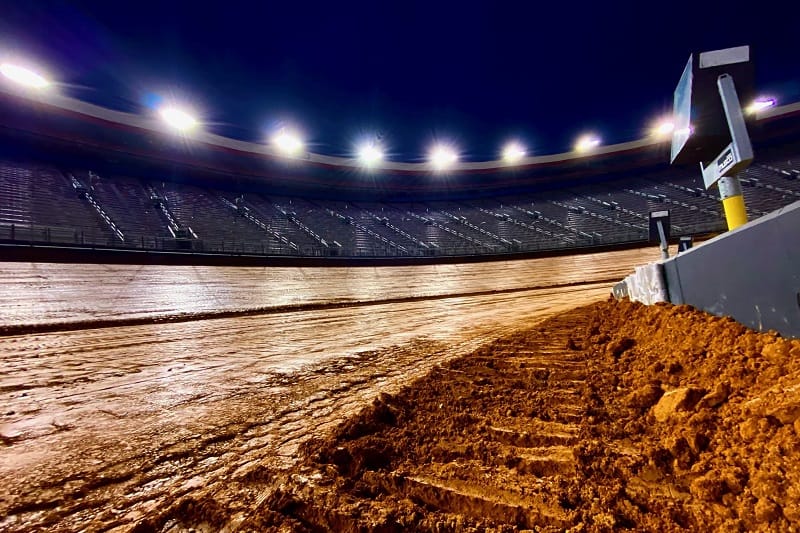With the NASCAR Cup and Camping World Truck Series‘ first forays on the Bristol Motor Speedway dirt layout right around the corner, NASCAR has revealed how the starting grid will be determined for both series’ heat and feature races. The heats were initially announced in early February before being confirmed by track officials later in the month.
Although a Friday practice session is scheduled, it will be irrelevant to setting up the grid for the four qualifying races on Saturday. Instead, a random draw based on owner points will assign a heat and starting spot to each driver. The approach is different from the Truck Series’ previous dirt race at Eldora Speedway, where qualifying determined the heat lineups. The four heats will be 15 laps long and only laps under green-flag conditions will be counted, while no overtime will take place even if a caution comes out late.
However, the feature’s lineup will not just be based on where one finishes in their heat, as is the case with the Eldora race and the Cup Series’ Duels for the Daytona 500. Instead, the grid is set based on the sum of points earned in each heat and a newly-introduced caveat of passing points. The top ten in each race earns up to ten points in increments of one.
Passing points are commonly used in other dirt track racing series and consists of awarding points for those whose finishing position is higher than where they began. For example, as one passing point is given per position gained, a driver who starts tenth and wins would earn nine passing points; on the other hand, if a driver finishes worse or equal to where they started, they do not get points. While some leagues like the American Sprint Car Series deducts points for spots lost, NASCAR’s approach of not penalising drivers for dropping positions resembles other series like the Stadium Super Trucks.
In other words, a driver who hypothetically starts fifth and wins will earn four passing and ten heat points for fourteen in total. If there is a tie, it is broken by owner standings. The heat points are only used for the lineup and do not go toward the championship.
The Truck race, scheduled for Saturday, 27 March, will be 150 laps long with stage breaks at laps 40, 90, and 150. The Cup race the following day is 250 laps long with segments cautions coming on laps 75, 150, and 250. Teams are not allowed to add fuel or tyres on pit stops unless it is between stages (though stops are not mandatory), while damage repair is only permitted for those involved in wrecks or another related incident. The choose rule that was introduced during the second half of the 2020 season will not be in place.
The Truck Series will have a second dirt race in July at Knoxville Raceway. While NASCAR has not confirmed if the Bristol heat rules will continue to be used, it is likely barring any changes based on what occurs at Bristol.



